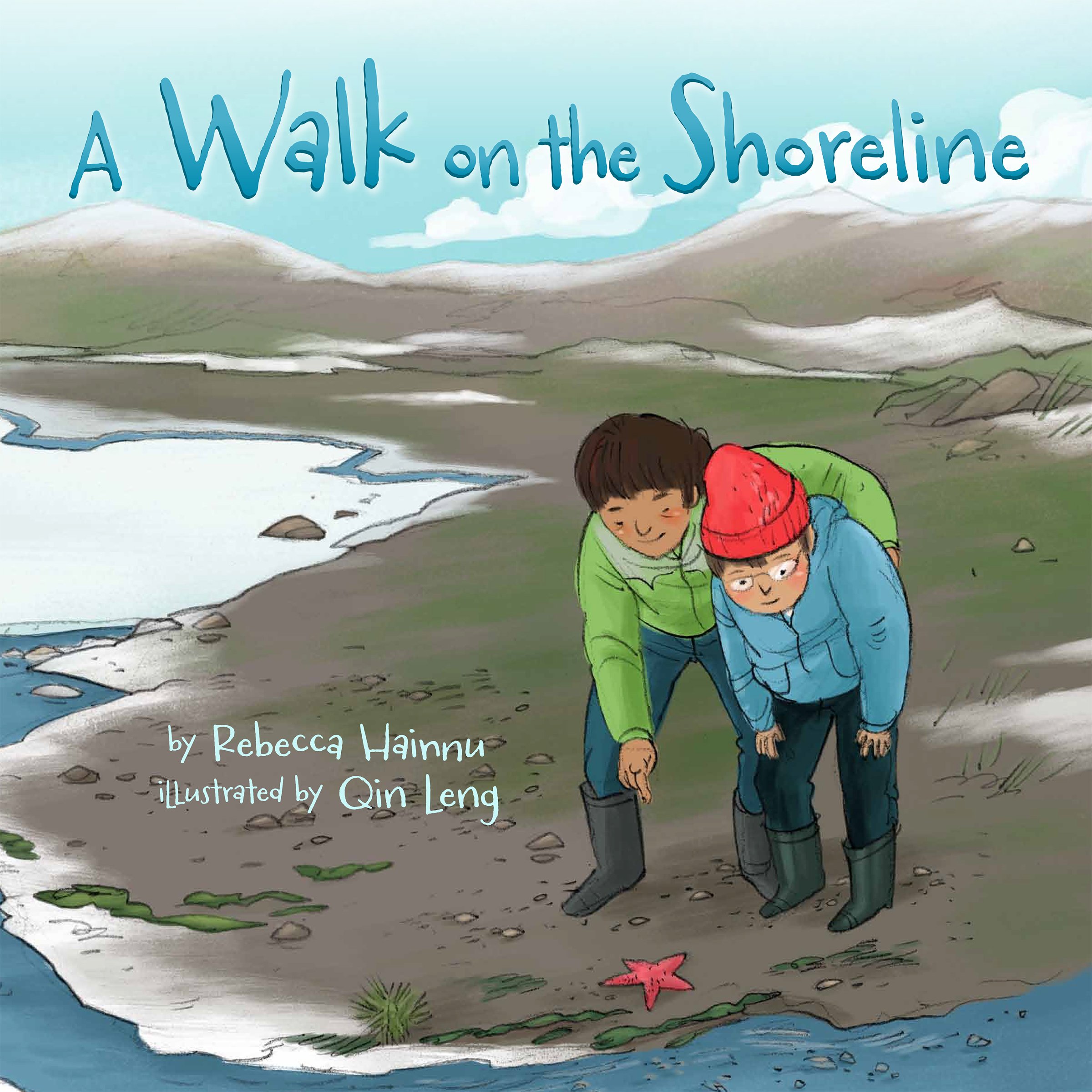This month’s Indigenous display features works in line with the Science Literacy Week theme of Oceans, Water and Lakes. Water and Waterscapes play an important role in Indigenous life and cultures. They are often at the centre of lifeways, and many Indigenous stewardship efforts focus on preserving and taking care of Land and water spaces. Indigenous stewardship also plays an important role in protecting Land and Indigenous voices are often in opposition to the pressures of agriculture and urbanization, and to bring attention to the issues of water quality and scarcity within their communities.
Science Literacy Week runs from September 16th – 22nd, and encourages children to engage and learn about the world around them.

A Walk on the Shoreline written by Rebecca Hainnu and illustrated by Qin Leng
This children’s novel introduces young readers to plants and animals native to the Arctic. Many plants and animals are part of the Arctic ecosystem during the summer months of 24 hour sunlight. Children can follow young Nukappia as he walks along the shoreline and learns about the plants and animals that live there and how the Inuit have used them for generations in medicine, food or as tools. The arctic is just not filled with ice and snow!
The Water Walker written and illustrated by Joanne Robertson
Follows an Anishinaabe grandmother (Nokomis), Josephine Mandamin and the Mother Earth Water Walkers, as she walks around the great lakes to raise awareness for their protection and continuation of future generations. Nokomis loves and respects Nibi, the Anishinaabemowin word for water, for the life that it gives our planet. Nokomis is upset about how humans are disrespecting the water and wasting it, and so she starts to walk to raise awareness. As Nokomis walks for Nibi, she sings and prays for the trees, birds, insects, animals and families yet to come who will require the clean precious water for survival.
Stewardship written by Anita Yasuda
Indigenous peoples have long taken on the role of protector in taking care of the Land. Stewardship highlights this role and its importance in protecting Land today. Indigenous peoples have lived for centuries across the diverse areas of Canada, and their lives are touched and influenced by the unique geographic areas that they call their homes. By living on the Land, Indigenous peoples have learned how to take care of it and respectfully use its resources. This book highlights the importance of their shared lands to Indigenous peoples and their efforts to protect their Land, and negotiate land claims within the Canadian government. In particular, water has played great importance in the lives of Indigenous, Inuit and Métis communities. It is part of their stories, and is often used in their ceremonies to cleanse and heal. However, access to safe drinking water is becoming a crisis for Indigenous communities in Canada, and it is through education and the stewardship efforts of indigenous peoples that changes are starting to be made
Sacred Water : Water for Life written by Lea Foushee and Renee Gurneau

As Long As Grass Grows: the indigenous fight for environmental justice, from colonization to Standing Rock written by Dina Gilio-Whitaker
Continuing her thesis work, Gilio-Whitaker draws attention to the importance of building alliances across social and racial divides, in order to support the environmental justice work done by Indigenous peoples. Often forced into the role of educators, this impacts the already contentious  relationships Indigenous peoples have with those around them. Through her work Gilio-Whitaker points to a need for an educational foundation to build productive relationships. The goal of this book is to provide an overview of environmental justice work done by Indigenous peoples, and what exactly the term environmental justice means to them and how it affects their lives. For change to happen alliances need to be built, government officials and settlers need to educate themselves and learn how environmental justice can be responsive to the needs of Indigenous peoples in their communities.
relationships Indigenous peoples have with those around them. Through her work Gilio-Whitaker points to a need for an educational foundation to build productive relationships. The goal of this book is to provide an overview of environmental justice work done by Indigenous peoples, and what exactly the term environmental justice means to them and how it affects their lives. For change to happen alliances need to be built, government officials and settlers need to educate themselves and learn how environmental justice can be responsive to the needs of Indigenous peoples in their communities.
